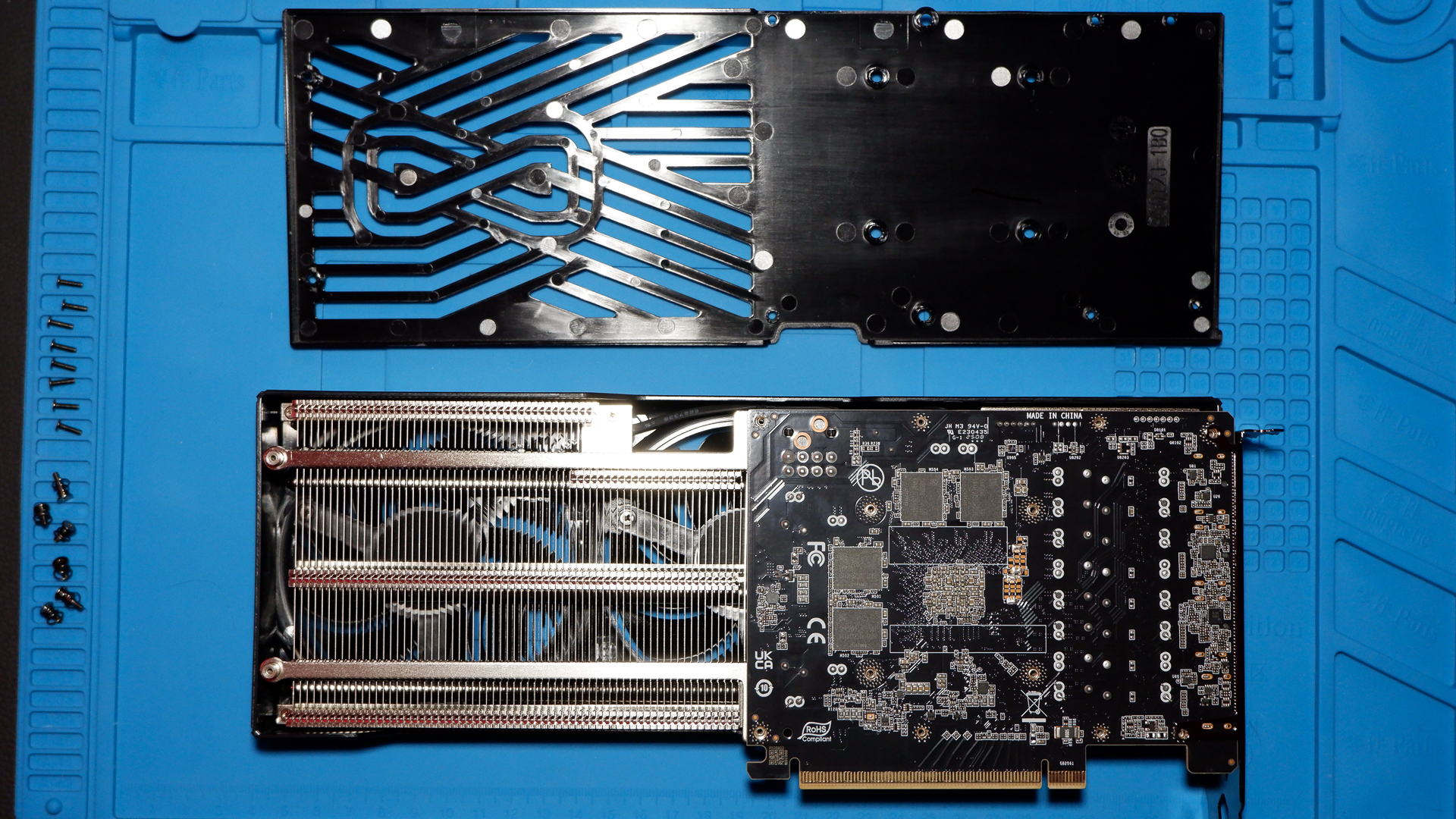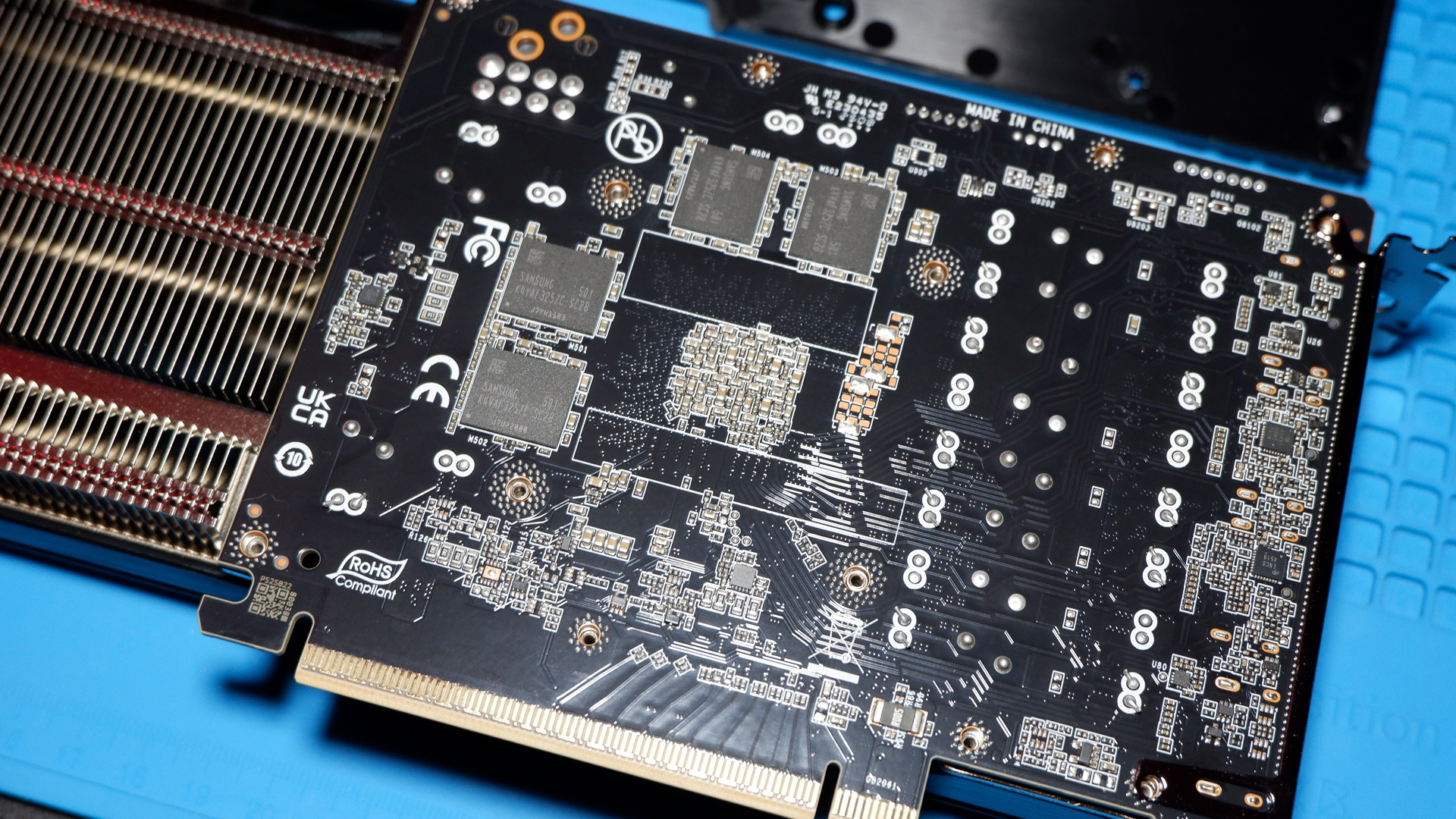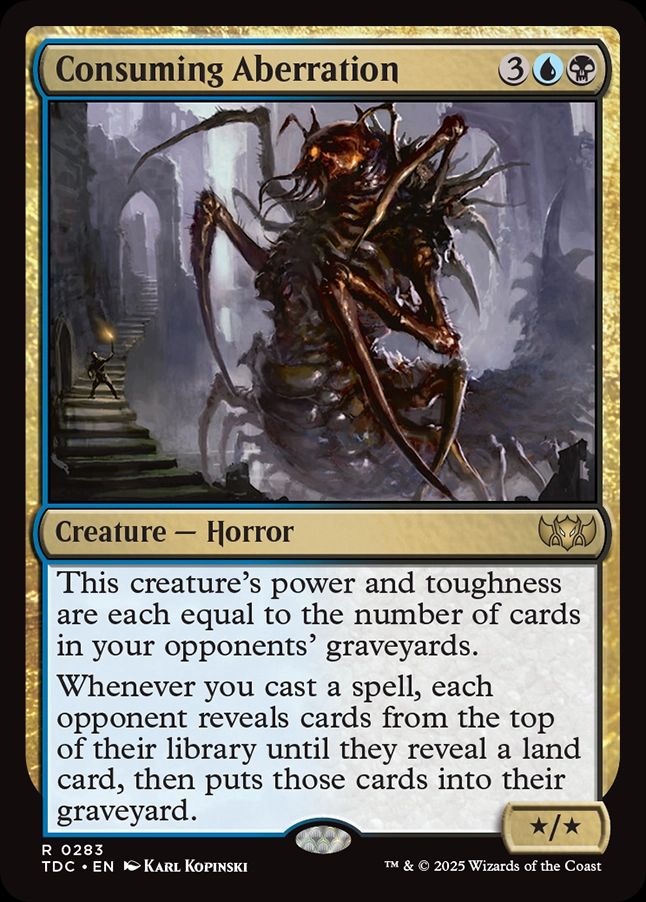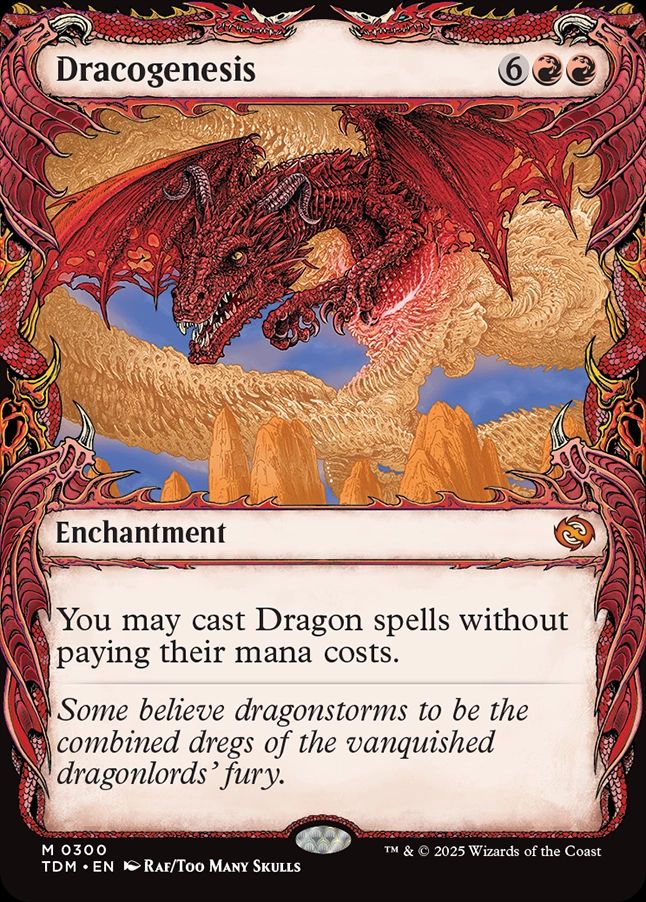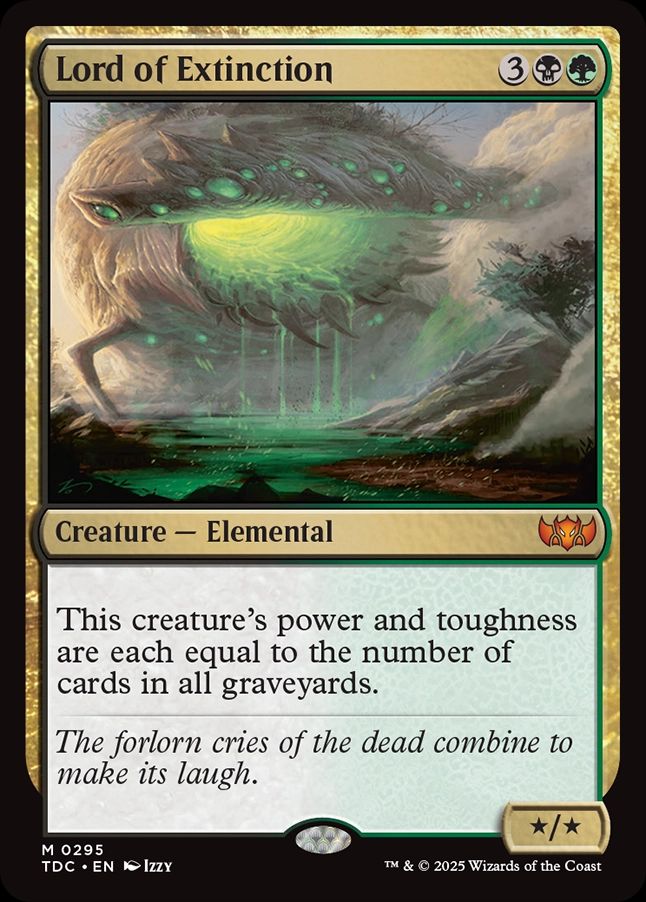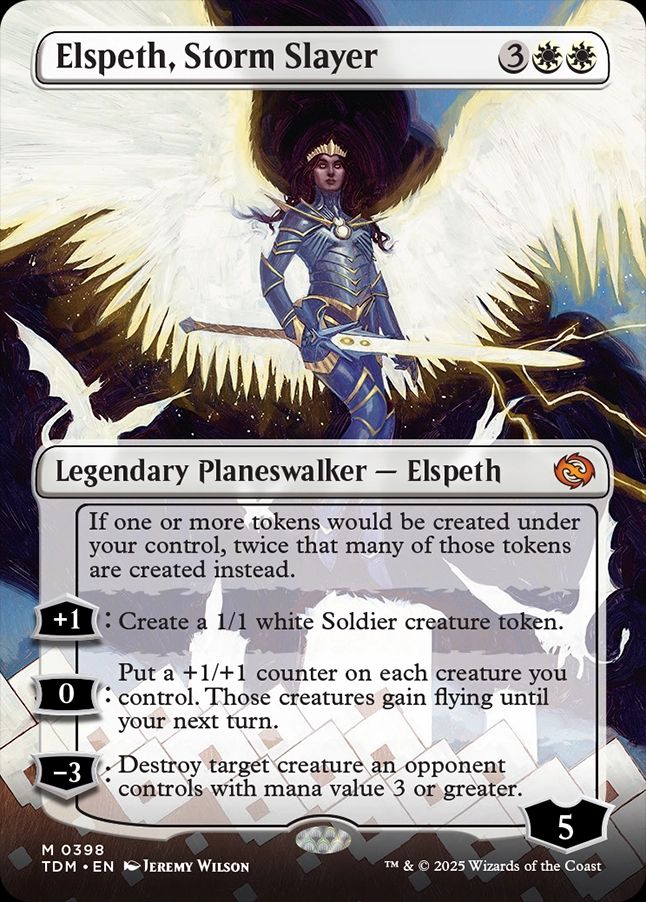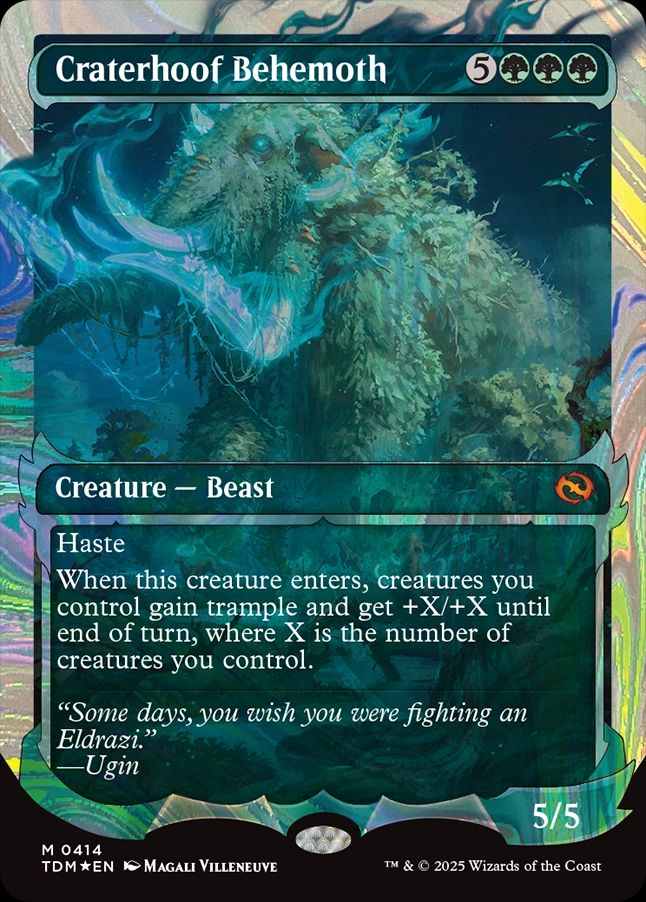
We first heard that Ubisoft‘s Star Wars Outlaws would be getting a pirate-themed expansion as the second story pack in the season pass, following the Lando-themed Wild Card DLC. Now, at Star Wars Celebration Japan, a release date has been announced, along with the trailer above.
A Pirate’s Fortune will see Kay Vess working with the pirate Hondo Ohnaka, who you may know from The Clone Wars or the Smuggler’s Run ride in Disneyland Galaxy’s Edge or multiple other appearances across the Star Wars canon over the years. The DLC has the two of you team up in search of the Great Khepi Treasure somewhere in the Khepi system. Apparently it’s in a tomb and there will doubtless be traps and a shocking betrayal at the finale.
Standing in opposition are Hondo’s former employees, the Rokana Raiders led by Stinger Tash. On your side are the Miyuki Trade League, who want you to smuggle their goods in return for upgrades you can apply to your freighter, the Trailblazer.
When A Pirate’s Fortune comes out, all Star Wars: Outlaws players will receive a batch of cosmetics based on Star Wars: Skeleton Crew—the show starring Jude Law on Disney+ that I hear is actually quite decent—including an outfit for your pet Nix, a trophy for the speeder, and a trinket for both the speeder and Trailblazer. It’ll all appear as a delivery crate once the update patch is downloaded on May 15.
Source link

Portable PC gaming has to be one of the coolest innovations in the space in recent years. Valve’s own Steam Deck and other similar Switch form factor gaming PCs are becoming huge business, and there’s plenty of competition keeping the space fresh. One such competitor was the AOKZOE A1 Pro, which impressed us with its great battery life, performance, and quiet and cool processing. Well AOKZOE is back, and its new A1X handheld PC is quickly reaching its launch date on Kickstarter.
We first got a sneaky look at the A1 successor at the beginning of the year when AOKZOE teased us with a look at the specs. It doesn’t look to have changed much since this early look. The new A1X still looks a lot like the A1 Pro with the biggest change being that sweet AMD Ryzen 9 AI HX 370 chip. We’ll have to wait to see how real world testing goes, but this boosted chip could give us upwards of 30% in performance over the A1.
The other features spruked are the 8-inch 120 Hz VRR native landscape display (many handheld screens are currently natively portrait) and a 72.7 Wh battery. That screen should provide a much smoother experience than the 60 Hz we saw on the A1, and it being natively landscape should mean that the touch experience is better calibrated in normal use, but will probably require more power to run it. This means we might not see the benefit of that larger battery, as the boost over the A1’s 65 Wh may go entirely to powering the screen and new chip. Even if that’s the case it should make for a nice upgrade, especially as our reviewer was pretty happy with the life on the A1.
The Kickstarter page for the A1X has locked down as it comes up to launch so there’s not a heap more information to go on. We’d love to know more about some of the other specs, especially which clocks AOKZOE have gone with to see how effective that new Ryzen chip will be, but for now we’ll just have to wait.
Pricing is another thing we’re going to have to wait and see about for this new handheld. The AOKZOE A1 Pro is currently sold out at its sale price of $899 USD, and has a MSRP at $1,099. It’s fair to expect the A1X to sit slightly higher than that thanks to its extra specs, but that also unfortunately positions it at a prime price point to suffer Trump’s tech tariffs. Still, with the Kickstarter set to launch soon, hopefully that wait won’t be much longer.
Source link

The Breakthrough Prize, whose co-founders include Sergey Brin, Mark Zuckerberg, and Yuri Milner, is kind of like the “Oscars of science” in that they’re glitzy, televised, and crawling with Hollywood celebrities. The most recent prize ceremony, for instance, featured appearances by Mr Beast, Goop founder Gwyneth Paltrow, and Katy Perry, among numerous others, none of whom do much to immediately bring my mind to, y’know, thoughts of science.
That also holds true for Seth Rogen, who took the stage with Edward Norton to present the special prize in fundamental physics to Dutch theoretical physicist and Nobel Prize winner Gerard ‘t Hooft. But apparently Rogen’s a little more up to speed about what’s going on out there than I gave him credit for, because as reported by The Hollywood Reporter, he used the opportunity to draw attention to the Trump administration’s ruthless dismantling of scientific endeavors, with the support of ultra-wealthy benefactors.
Following an introduction by host James Corden, the presentation began with Norton offering praise to some of the tech billionaires in the audience, which included Brin, Zuckerberg, and Milner. Then Rogen jumped in.
“And it’s amazing that others in this room underwrote electing a man who, in the last week, single-handedly destroyed all of American science,” Rogen said, a clear shot at the many tech billionaires who rushed to pledge fealty to US president Donald Trump immediately after his election or donated to his campaign.
“It’s amazing how much good science you can destroy with $320 million and RFK Jr, very fast,” Rogen continued, directly targeting Robert F. Kennedy Jr, the Secretary of Health and Human Services who thinks vaccines cause autism and measles is no big deal, and Elon Musk, who famously poured hundreds of millions of dollars into the Trump election campaign. (Purely speculatively, that may also be a typo: Musk had a reported net worth of $320 billion in March 2025, although it’s gone up since then because of course it has. He spent “at least $288 million” backing Trump’s campaign, according to The Washington Post.)
The bit didn’t land super well with the audience and made Norton “visibly uncomfortable,” according to the report, but that’s what happens when you speak truth to power. It was also completely absent when the ceremony was posted to YouTube: Rogen’s joke was cut out entirely.
The Breakthrough Prize Foundation told THR that the edit, along with “several” others, was made “in order to meet the originally planned run time,” and sure, that happens for broadcast, but for YouTube? And the edit is so smooth and perfectly placed, you wouldn’t even know it was made.
Can you tell?

According to THR—which, for the record, is a media sponsor of the Breakthrough Prize Ceremony—Rogen dropped his bombs just prior to Norton’s “light applause” comment near the start of the video, which was actually a reference to the audience’s iffy reaction to the jokes and not their appearance on stage. Another joke a little later in the presentation, in which Rogen talks about a wheel that can roll left or right and then says the crowd would “roll right,” was also cut from both the full video and the excerpt above—and again, with a precision that makes its absence entirely unnoticeable, as if it was never in the picture in the first place.
Rogen’s criticism of the tech industry isn’t the only thing to be cut: A “lewd” joke Corden made about Judi Dench and Dr. Anthony Fauci was also reportedly snipped, and so it may well be that the Breakthrough Prize people simply cut every uncomfortable joke, and not just the ones most likely to upset the wealthy and powerful.
Regardless of the motivation, another scientific principle has now taken hold: the Streisand Effect. Despite the infusion of Hollywood, the Breakthrough Prize ceremony is relatively unknown, but Rogen’s jokes—and the fact that they were edited out—have drawn widespread attention on social media and news outlets. They also drew support from at least one former Breakthrough Prize winner, Tom Radcliffe, who said on Bluesky that Rogen “did the right thing, to disturb the comfortable.”

Source link












We’re getting into the entry-level with the RTX 5060 Ti and a price-savvy graphics card is just what the market needs right now. Available in 8 GB and 16 GB models and priced at $379 and $429, respectively, a good deal is what the RTX 5060 Ti aims to offer. It undercuts the previous generation, puts a small fire under the competition, and delivers some new features that you can either choose to take advantage of or not and still feel like you got your money’s worth.
With prices up in the air and what some might call ‘macro economic headwinds’ affecting global moods, I’m not sure how well this ‘good deal’ statement will age. In fact, I’ve just had a look around at retailers in the hours preceding publishing this review and the 8 GB card costs as much as the 16 GB card and the 16 GB card is just under $500. That’s not good. Yet in my pre-release isolation, I’ve been reasonably impressed with the RTX 5060 Ti 16 GB.
It offers a decent upgrade on the RTX 4060 Ti from a relatively small improvement to its silicon, spurred on by much speedier memory. Its has little ‘wow’ factor, slipping in right where you’d expect it to in the existing stack, but for a more competitive price tag than last-gen models. It’s faster than an RTX 4060 Ti but not close enough to the RTX 5070 that a judicious overclock will cannibalise that card—though it does take to overclocking with aplomb.
I’ll be focussing on the 16 GB version of the RTX 5060 Ti for this review. Specifically, the Palit RTX 5060 Ti Infinity 3 16 GB, which I’m told will be available at MSRP in the UK. We’ve not been provided an 8 GB model for launch, though I have included figures for another two 16 GB cards: the PNY RTX 5060 Ti OC, which will be available at MSRP in the US; and the MSI RTX 5060 Ti Gaming Trio OC Edition.
RTX 5060 Ti 16 GB verdict
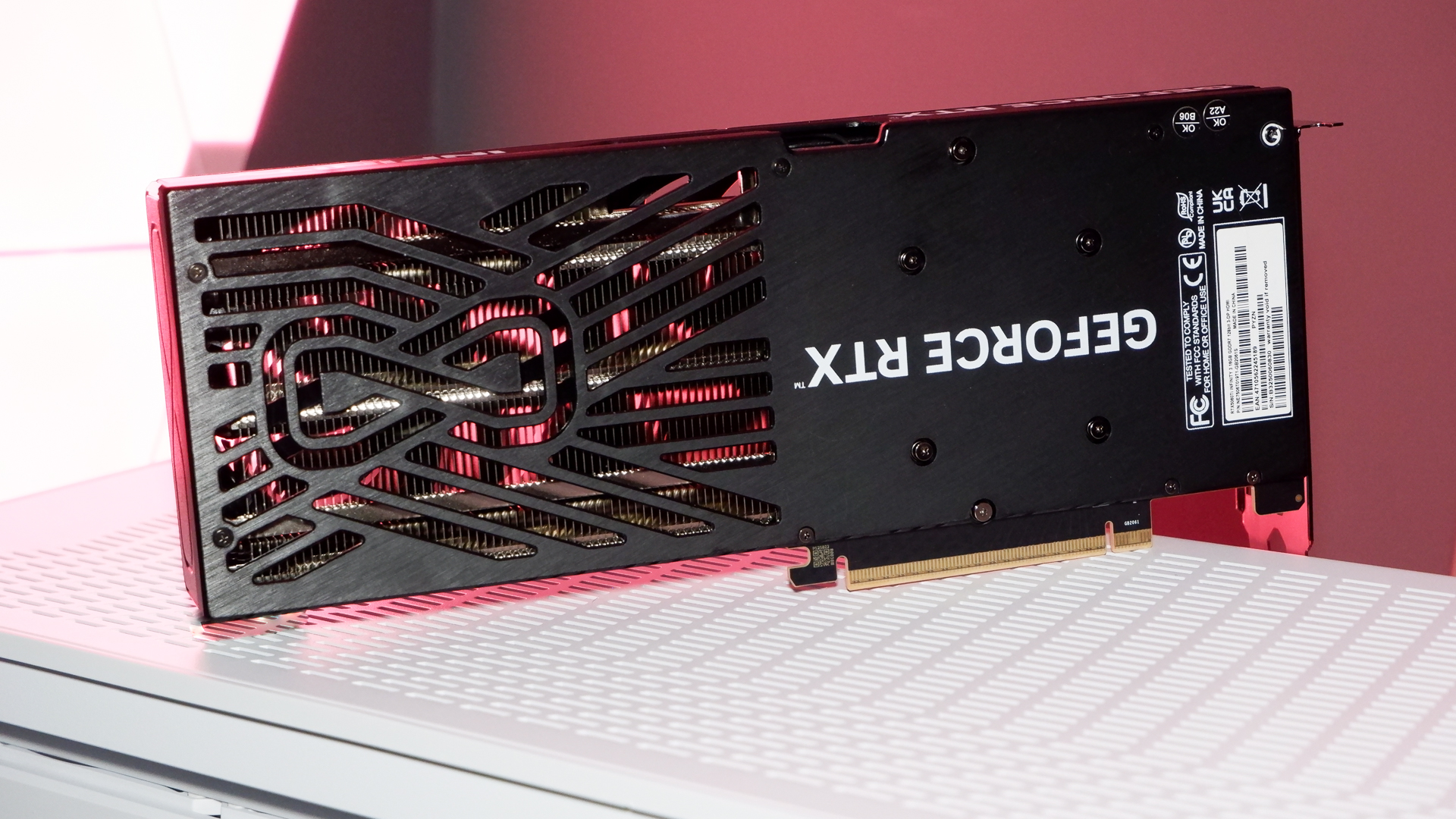
Buy if…
✅ You want an efficient graphics card for 1080p or 1440p: A 20% performance uplift over the previous generation for just 20 W more. That’s impressive scaling.
✅ You are on an older graphics card, perhaps a GTX: You can probably live without the extra 20% and Multi Frame Generation if you’re already rocking an RTX 40-series graphics card. However, as someone on an older card, the RTX 5060 Ti offers a great upgrade path, providing it’s something close to MSRP.
Don’t buy if…
❌ You want more VRAM and the means to use it: The 16 GB version of this card is more appealing for all that VRAM, but this GPU isn’t totally equipped to put it to great use at higher resolutions.
❌ Prices end up way over MSRP: Perhaps I don’t need to say it, but if you’re spending over $500 on this card, you’re no longer getting a good deal. Over $550 and you’re paying RTX 5070 money…
The RTX 5060 Ti 16 GB is a good entry-level graphics card and a worthy upgrade for some PC gamers.
It benefits from a power-efficient architecture, offers a real-terms performance uplift over the previous generation, and wields a higher VRAM configuration that, at MSRP, is without a controversial price premium. It’s a good proposition, even if you prefer to wave away nascent AI-powered features like Multi Frame Generation.
It’s an especially good proposition if you’re looking to upgrade from an older graphics card, especially one beginning with ‘GTX’. Nvidia does recommend using a 600 W power supply with this card, which might nix an easy upgrade for some, but even Intel’s Arc B580 requires a 600 W PSU, so you might just have to suck it up and buy a new one if you intend to upgrade.
The RTX 5060 Ti naturally excels at 1080p, though 1440p is easily within its reach. If you’re playing a game with support for Multi Frame Generation, you can dual-wield it and DLSS for genuinely impressive frame rates even at the higher resolution. Just be cautious of overstretching the card, both with and without MFG, as it only features slightly improved specs compared to its predecessor, the RTX 4060 Ti. Yet that and its 16 GB of speedy GDDR7 is enough to maintain around a 20% lead at 1080p and 1440p in our testing.
Available in two memory configurations, 16 GB and 8 GB, the latter feels like a small amount of memory in 2025, especially as there have been many cards over the years with more memory for a similar price, including the cheaper Arc B580. But I’ve yet to see much evidence that the larger VRAM buffer will be a huge boon on what is ostensibly a small GPU compared to others in the RTX 50-series, and intended for sub-4K resolutions. 16 GB is nice, but it’s nicer when the GPU and memory bus can make the most of it.
There are big question marks over price and availability with this card, due to prior and ongoing issues affecting the existing RTX 50-series. And then there’s AMD’s teased but not yet officially announced RX 9060-series, which should arrive within a couple of months. If all that sounds like reasons to hold off purchasing a new graphics card until later in the year, you might be saving yourself some hassle. But if you can’t wait any longer and your graphics card is on its last legs, the RTX 5060 Ti at, or near, MSRP is a smart buy.
RTX 5060 Ti 16 GB specs
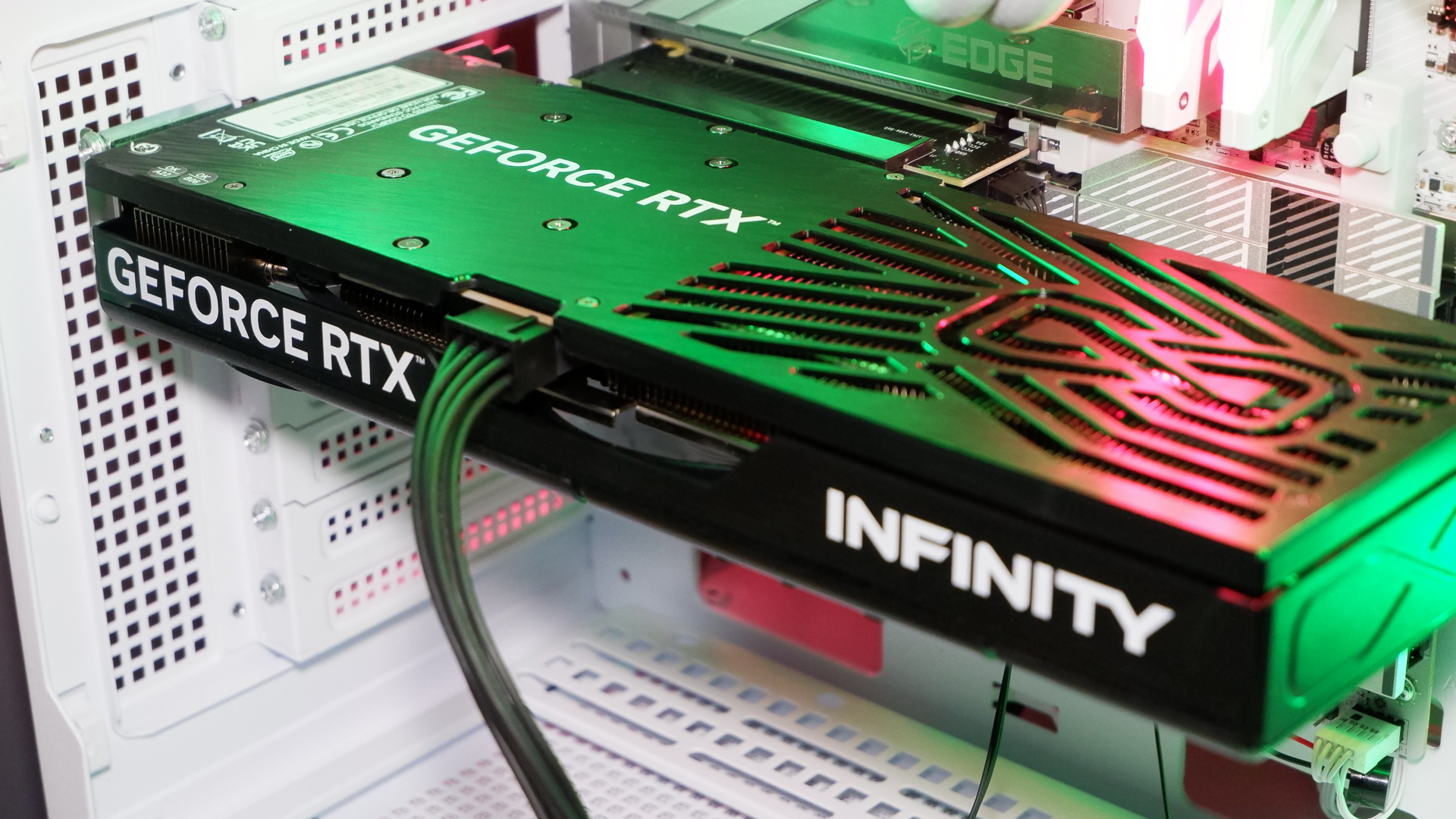
Let’s start with the top line, the all-important specifications. The RTX 5060 Ti is a pretty good deal on paper. It features more cores, more RT chops, higher clocks, and AI TOPS than its predecessor, the RTX 4060 Ti, and for nominally less cash.
There’s slightly less to get excited about when you dive into the GPU silicon, though. An increase in Streaming Multiprocessors (SMs) of just 5.88 % cascades through the core counts, RT cores, and Tensor cores. That’s hardly a big number to wave in your friends’ faces once you get hold of this card. However, the move to much faster GDDR7 memory with the RTX 50-series offers a much more bragworthy digit of a 55.55% increase in memory bandwidth to 448 GB/s, to match an increase in memory speed from 18 Gbps to 28 Gbps.
That memory speed and bandwidth improvement is even more pronounced compared to last generation on the lower-end of the RTX 50-series, as the cheaper RTX 40-series cards used slower GDDR6 memory instead of the GDDR6X chips found on enthusiast models.
| Header Cell – Column 0 | RTX 5060 Ti | RTX 4060 Ti | Percentage change |
|---|---|---|---|
CUDA cores | 4608 | 4352 | + 5.88% |
SMs | 36 | 34 | + 5.88% |
RT cores | 36 (4th Gen) | 34 | + 5.88% |
Tensor cores | 144 | 136 | + 5.88% |
ROPs | 48 | 48 | No change |
Memory capacity | 8 GB/16 GB | 8 GB/16 GB | No change |
Memory bandwidth | 448 | 288 | + 55.55% |
Memory speed | 28 Gbps | 18 Gbps | + 55.55% |
Memory bus | 128-bit | 128-bit | No change |
MSRP (8 GB model) | $379 | $399 | – 5% |
MSRP (16 GB model) | $429 | $499 | – 14% |
That’s not the only reason to focus on memory with the RTX 5060 Ti: it’s available in 16 GB or 8 GB variants.
All of my testing in this review is for the 16 GB variant, with three models of the 16 GB card being the first to arrive on my desk. This card’s predecessor, the RTX 4060 Ti, also came in both 8 GB and 16 GB variants, but the larger capacity model arrived later and to little fanfare.
To help put the inevitable memory debate into perspective, the RTX 4060 Ti 16 GB was a tough sell at launch. Launching later than its 8 GB variant for $100 more, it only really benefited a few niche cases, and often not by much. It felt like a cynical launch to us; a reaction to the discontent brewing for a near-$400 card with 8 GB of memory and a 128-bit memory bus. Even Nvidia seemed reluctant to talk much about the card, and that’s why we never saw one for review. As such, all of my results for the RTX 4060 Ti are for the 8 GB variant.
Has much changed with the RTX 5060 Ti 16 GB?
Exactly like its predecessor, the RTX 5060 Ti opts for the same, rather paltry, 128-bit memory bus across both variants. For the 16 GB model, it uses a ‘clamshell’ memory configuration. Essentially, this means that memory has been attached on both sides of the PCB—the memory acting as the bread of the sandwich, so to speak—requiring cooling pads affixed to the graphics card’s backplate. Increasing the memory capacity in this way doesn’t increase throughput, as memory bus width and speed dictate that, but there’s less chance of a hoggish game running out of room and hampering performance.
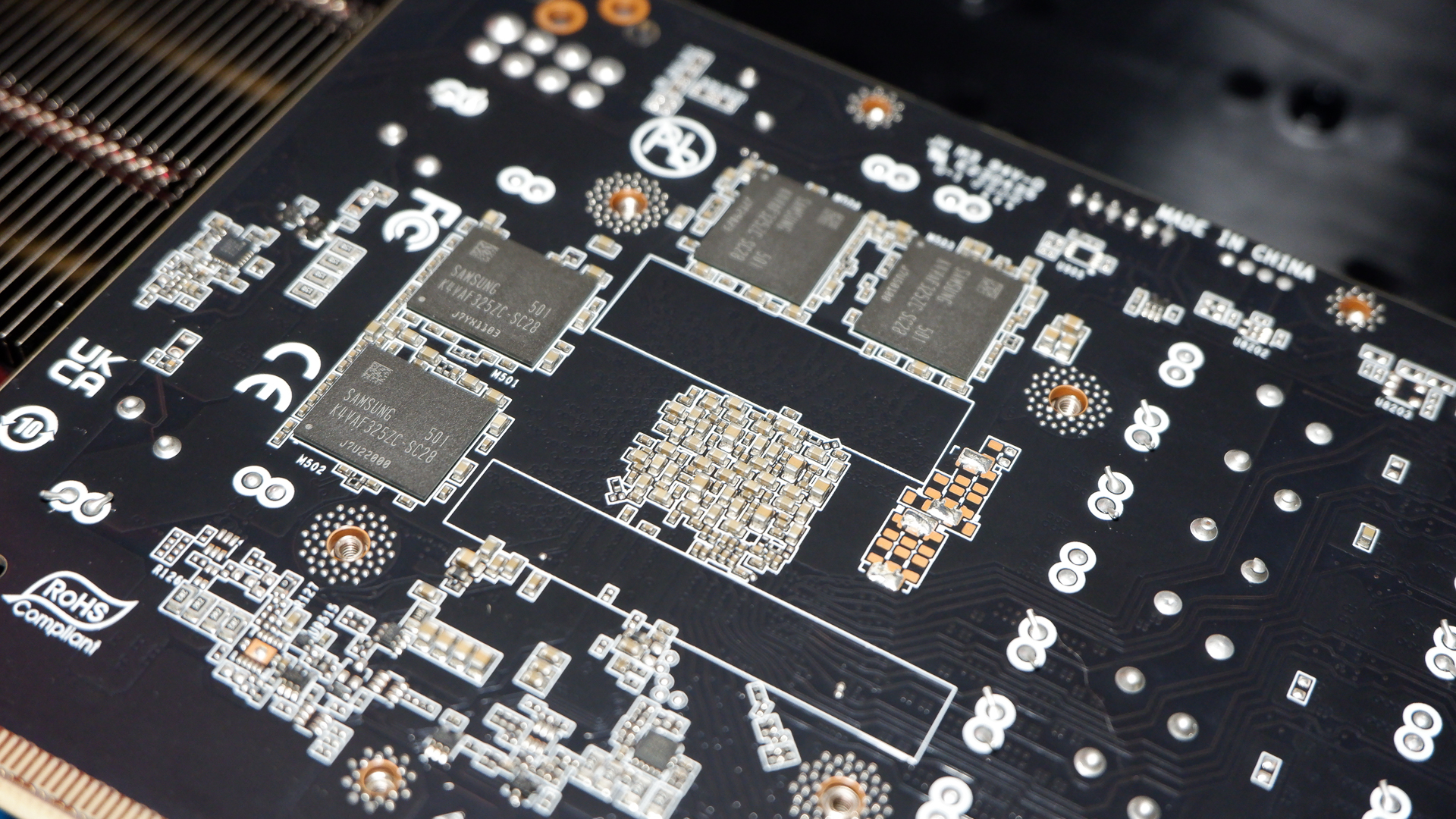
Yet, unlike the RTX 4060 Ti 16 GB, which cost $100 more than the 8 GB version, the RTX 5060 Ti 16 GB costs just $50. That puts it much more in the mix, providing real-world prices actually reflect this.
Memory matters most when gaming at higher resolutions, ie 4K, but we’re mostly talking about 1080p/1440p performance in regards to the RTX 5060 Ti. That bears out in my game testing in the performance section below, where the RTX 5060 Ti 16 GB is able to extend its lead over the RTX 4060 Ti 8 GB to a much greater extent at 4K compared to 1440p and 1080p.
But I want to be clear about my thoughts on future-proofing and VRAM: opting for the 16 GB variant is not a panacea for performance in four, five, or six years’ time. It might help with the odd case of a game running like pants due to poor optimisation, though these issues can be, and often are, fixed with a little dev work. Ultimately, the fundamentals remain the same either way: the GA206 GPU and 128-bit bus will ultimately end up limiting factors for future performance.
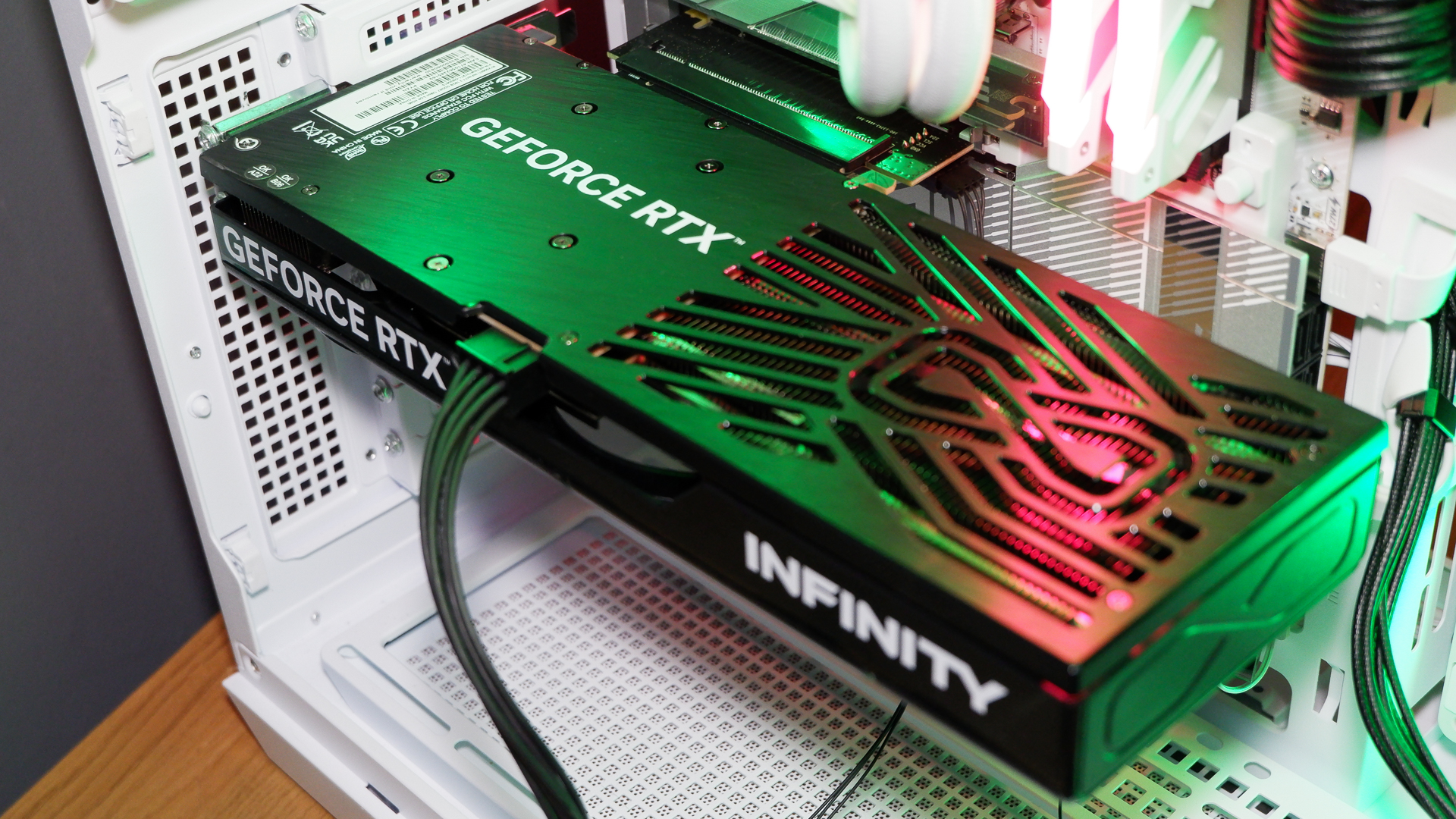
The RT cores, Tensor cores, and CUDA Core counts are still likely to wane in efficacy over time, as new games make better use of more modern features. You’re still better off saving up for the xx70 card or a Radeon option if memory performance and longevity matter most to you.
And there have been some edge cases for high VRAM memory usage, such as The Last of Us Part 1, but we’ve since seen memory usage improvements with its sequel. The Last of Us Part 2 uses a smart asset management system that improves VRAM usage and doesn’t trip over its own shoelaces when presented with an 8 GB card. That’s not to say all games will follow in its footsteps, but it’s a promising sign.
The ideal solution is that we see Nvidia adopt 12 GB as a standard on its low-end cards and ditch 8 GB altogether, while matching existing prices. That is, rather than this 16 GB stop-gap on a GPU not designed to make the most of it. Nvidia argues that 8 GB helps keep costs low globally, in markets beyond Europe and the US, which is fair, and I don’t have the bill of parts in front of me to belabour the point, but perhaps bringing back a desktop xx50 card would help solve that one?
So, would I buy the 16 GB card if presented with it for $50 more than the 8 GB option? Sure. Therein lies the duality of PC gamers and our allergy to reason when building PCs. Altogether, we can chalk up the 16 GB card as a ‘nice to have’, but I wouldn’t pay over the odds for it.
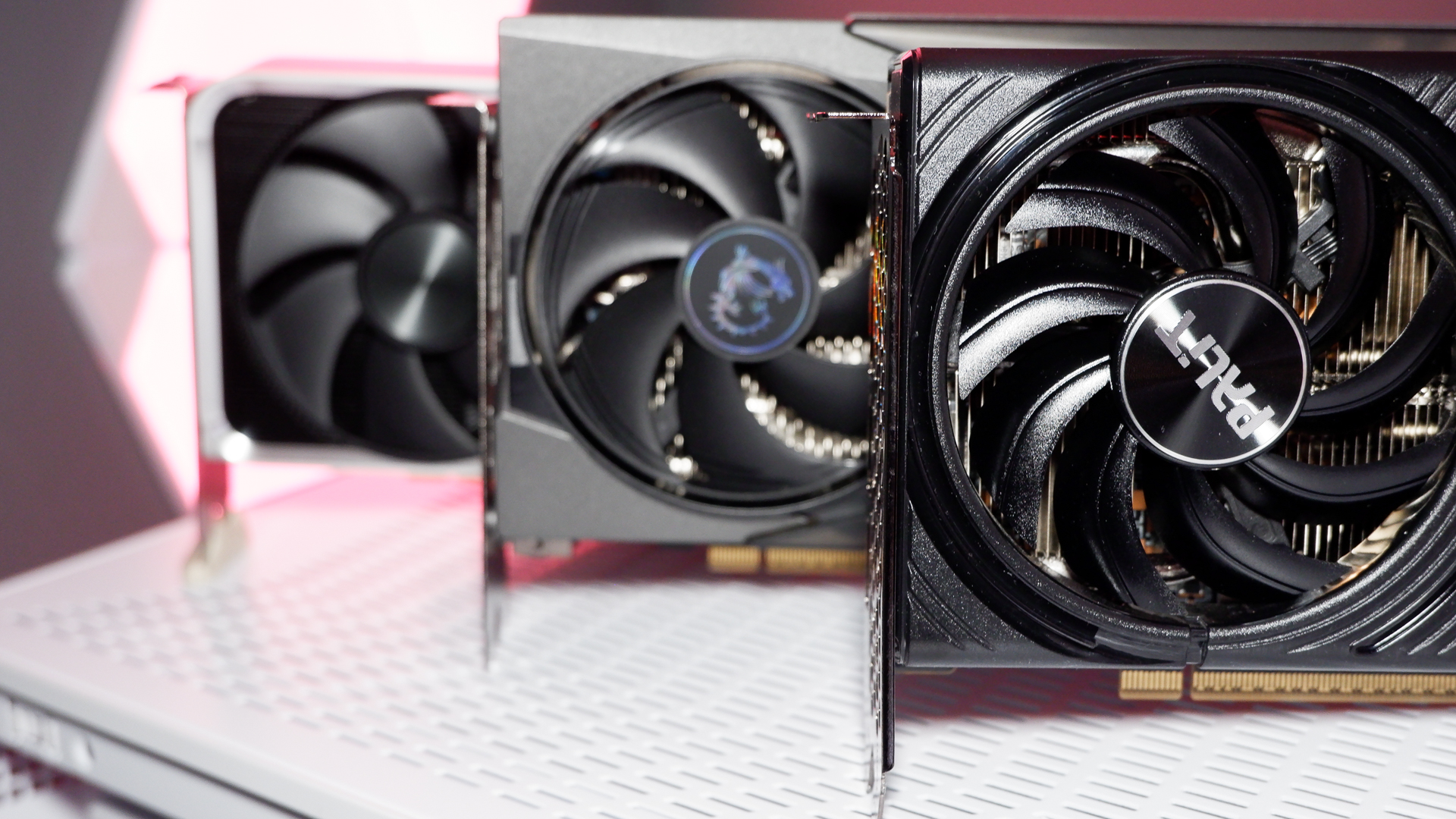
Moving on, the RTX 5060 Ti runs faster than most RTX 50-series cards. That’s to be expected for a smaller die, and the GB206 is the smallest of the lot at 181 mm2. With a reference boost clock of 2572 MHz, it is only a small amount slower than the RTX 5080 FE at 2620 MHz, but its base clock is the highest yet at 2400 MHz.
That’s for a 180 W TGP (total graphics power)—20 W higher than the RTX 4060 Ti and 70 W lower than the RTX 5070.
What’s pretty impressive is how each one of those extra watts over the RTX 4060 Ti converts neatly into a single percentage point gained in our testing at 1080p and 1440p—the RTX 5090 at nearly 600 W could only dream of that sort of power scaling.
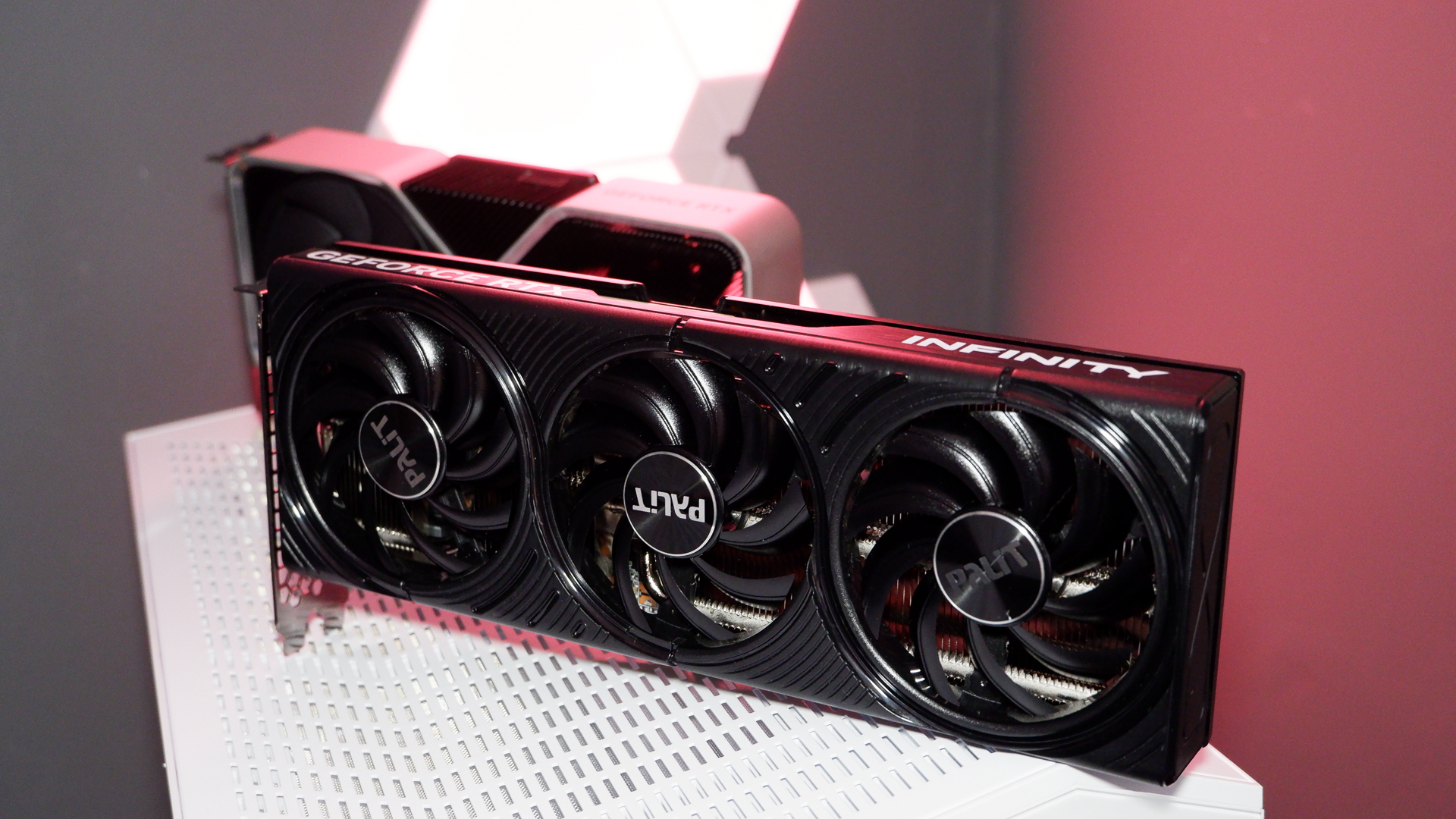
There is no Founders Edition for the RTX 5060 Ti in either 16 or 8 GB variants. That’s a shame, as we’ve come to appreciate the Founders Edition model for its low temps and noise with other 50-series GPUs, but most of all for its price. MSRP cards are not often found in today’s world, and the lack of Founders Edition from Nvidia only serves to remove another opportunity to buy an RTX 5060 Ti at the asking price.
Palit RTX 5060 Ti Infinity 3 specs
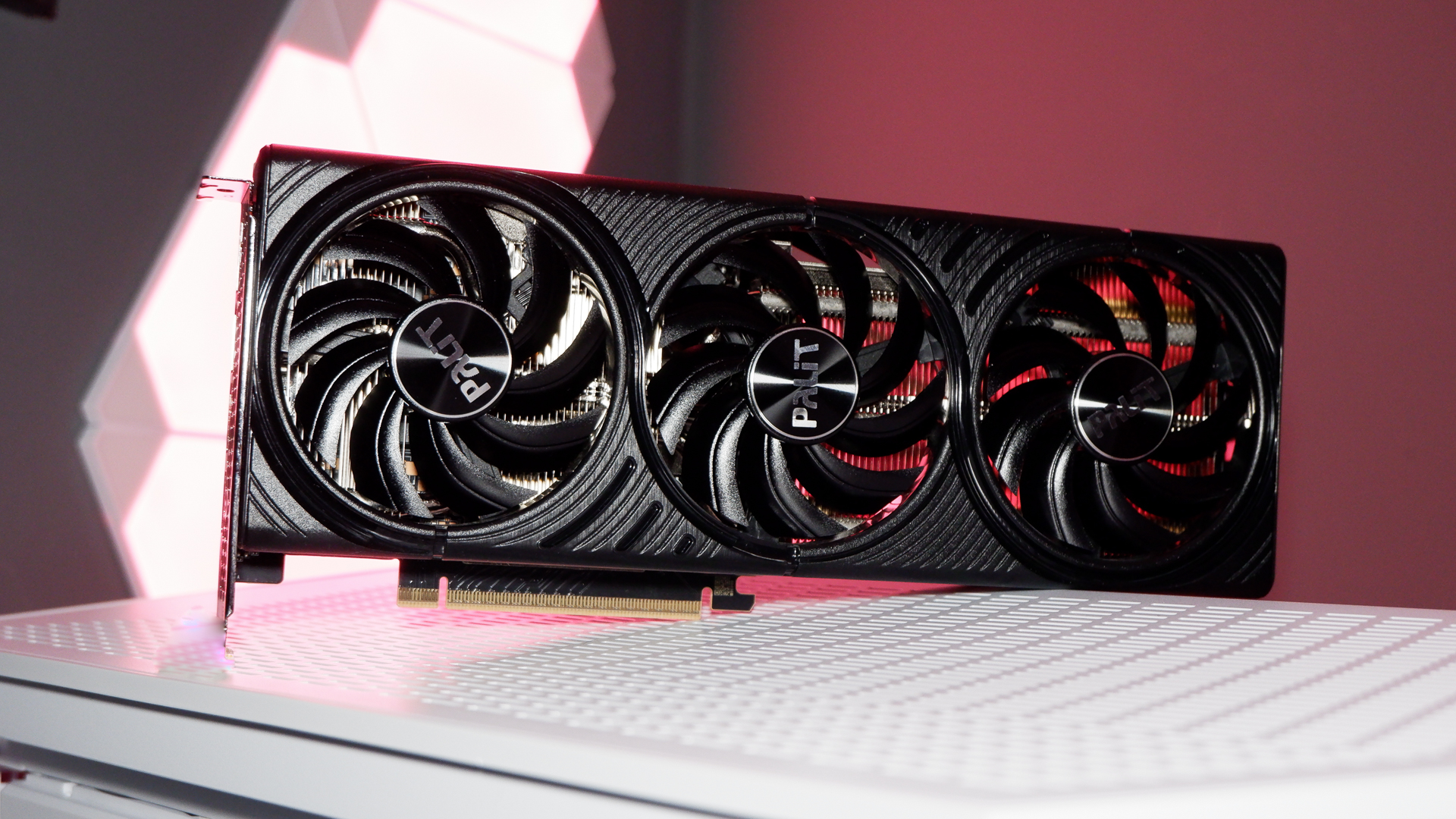
With no Founders Edition, I’ll be focusing on the Palit RTX 5060 Ti Infinity 3 and for this review. I’ve been assured this will launch at MSRP in the UK. That’s £399 for the 16 GB model, or £349 for 8 GB. Whether this specific card will be widely available in the US or close to MSRP is still a mystery, however.
We’ve also tested the PNY RTX 5060 Ti Dual Fan OC, which we’ve been promised is an MSRP model in the US, and the MSI RTX 5060 Ti Gaming Trio OC Edition, which is going to be priced higher. So, all bases are covered in the performance section below.
What you get with the Palit Infinity 3 is a triple-fan shroud with a slim heatsink, measuring 290 x 102.8 x 38.75 mm. It’s nowhere near as thick as the MSI RTX 5080 Ventus 3X OC I’ve close to hand, which I thought to be a fairly slim GPU, but the Infinity 3 is only aiming to dissipate a reasonable 180 W and sticks to reference clock speeds.
I was slightly surprised to see the single 8-pin power connector on this card, as opposed to the 12V-2×6 connector on the MSI card. Though the PNY showed up shortly after the other two and also uses a single 8-pin power connector, so that might be a bit of a theme.
Opening up the rear of the Palit Infinity 3 to gaze upon its clamshelled memory, I was surprised to find there are no extra thermal pads to cover these rearward chips. In fact, the entire backplate is made of plastic, so it wouldn’t be a wise idea anyway. That makes for a stark comparison to the MSI Gaming Trio OC and PNY OC, which both feature a metal backplate and a couple of thermal pads for those rear memory chips.
Due to the lack of thermal pads, I’ve not pushed a memory overclock on this card, as I usually would the RTX 50-series. I kept an eye on memory junction temperatures while benchmarking Metro Exodus, and they stayed below 70°C. This suggests there’s no major issue at stock speeds, though these are average temperatures across all memory chips, which might hide the worst fluctuations on those specific rear-facing chips.
RTX 5060 Ti 16 GB performance and benchmarks
A 20% improvement versus the last generation, that’s what Nvidia was touting for this card before we got our hands on it, and it’s a fair assessment. My own testing bears that out, with the RTX 5060 Ti 16 GB 20% faster than the RTX 4060 Ti 8 GB at 1080p, and 23% at 1440p—that’s raw raster, too, upscaling and frame generation notwithstanding.
It’s a good showing from the RTX 5060 Ti, considering it only asks for 20 W more from the wall. In my testing during Metro Exodus runs, it averaged a power draw of 26 W, too, with a peak of 207 W. All only a hair’s breadth from the RTX 4060 Ti it replaces. That shows off the benefits of Blackwell, notably in its power usage through features like improved power gating, which we’ve seen make a big impact on gaming laptop battery life.
PC Gamer test rigCPU: AMD Ryzen 7 9800X3D | Motherboard: Gigabyte X870E Aorus Master | RAM: G.Skill 32 GB DDR5-6000 CAS 30 | Cooler: Corsair H170i Elite Capellix | SSD: 2 TB Crucial T700 | PSU: Seasonic Prime TX 1600W | Case: DimasTech Mini V2
I don’t suspect we’d have seen sweeping changes to those percentages had we tested an RTX 4060 Ti with 16 GB of VRAM. Maybe some improvements here or there. The larger memory buffer makes little difference to performance unless memory is the bottleneck, and in most cases, at least in our benchmarking suite, it’s not. It will make a difference in some titles, but, for reference, our sister site Tom’s Hardware reviewed the RTX 4060 Ti 16 GB and reported it largely tied for performance with the 8 GB variant at 1080p and 1440p.
At 4K, the 5060 Ti manages to outperform the 4060 Ti 8 GB by a massive 40% on average in my testing. This is massively skewed by a near-doubling of frames from ‘bad’ to ‘improving but still bad’ in Cyberpunk 2077—8 to 15 fps. Most of the time, a 30% increase is to be expected, especially in games with a passable frame rate. That does make the RTX 5060 Ti a near-enough 4K capable card in lesser demanding games, ie Homeworld 3 and The Talos Principle. Throw in upscaling and frame generation and it’s absolutely ready to go.
But there are other comparisons we can make to show the RTX 5060 Ti’s potential. Take one of AMD’s best price/performance cards from the last generation, the RX 7800 XT. This card launched at $499, but has been available for as low as $430, matching the 5060 Ti 16 GB. It’s a shame it’s not still available at that sort of price, as it would’ve made for a great analogue to Nvidia’s latest.
The RX 7800 XT is around 7–8% quicker than the RTX 5060 Ti, with 16 GB of memory to match. Right now, an RX 7800 XT will cost you around $650, in which case, you might as well look for a newer RX 9070, which runs circles around both cards. The 9070-series isn’t the intended competition to the RTX 5060 Ti, however, that would be the RX 9060-series. These cards have been confirmed and are headed our way by June, so says AMD, though we know zilch (officially) about them yet.
Weighing up only Nvidia’s options, you have the RTX 5070 sitting around 29% faster than the 5060 Ti at 1080p, 33% faster at 1440p, and, despite having only 12 GB of VRAM, 36% faster at 4K. That’s a great example of why memory capacity isn’t everything—you need the supporting silicon too. With a price tag supposedly of $549, this card will cost you $949 if you want to buy one in the US right now. In the UK, however, it’s been spotted below MSRP. Make sense of that one… I’ll have to try to shortly.
With an easy overclock, I am able to get the RTX 5060 Ti to within 20% of the RTX 5070 at 1080p, and 23% at 1440p.
Overclocking
The RTX 5060 Ti is a solid overclocker. The rest of the 50-series lot has been the same. Though there is more to gain on an entry-level graphics card by increasing performance by a frame or two. Or, in some games, five or six.
With a 400 MHz offset on this reference clocked card, I saw an average increase in frame rates of 7% at 1080p and 8% at 1440p.
With the Palit lacking any thermal pads on the memory chips attached to the rear of the PCB, I took a memory overclock out of the equation. No offset for this card, which is a shame, as Samsung’s GDDR7 chips will easily run well above 28 Gbps on most others I’ve tested.
For the core clock, that was easy. I set a 425 MHz GPU core offset with minimal fuss, looping 3DMark’s Steel Nomad test in the background to show any immediate issues. None came up. I then took to Metro Exodus Enhanced Edition, which is a great measure of overclock stability and usually highlights any gremlins in the machine. That it did, too, and it was back to the drawing board after a subsequent crash.
A couple tweaks later, and I’ve found a stable +400 MHz offset, which lands me with an average clock speed of 3040 MHz in Metro Exodus Enhanced Edition at 4K. Anything over 3000 MHz fulfils my need to see a big number on-screen and, as I’ve since found with an MSI model, going much over 3000 MHz doesn’t eke much more out of this chip. The benefit there is that, if your GPU allows it, you can work backwards from there by using power limits to reduce your overall power consumption.
I kept it simple with limited time available to me. Even so, this set-and-forget overclock offered a very respectable performance uplift with no impact on power draw or temperatures, as I never touched the power limits.
Multi Frame Generation
It wouldn’t be an RTX 50-series card without support for DLSS 4 and Multi Frame Generation. These two features are arguably the more practical ways to tap into Nvidia’s self-proclaimed “Age of Neural Rendering” and utilise AI to improve frame rates and visual fidelity.
The RTX 5060 Ti and its fellow 50-series cohorts can all enable Multi Frame Generation—this essentially allows your graphics card to generate two or three ‘fake’ frames between ‘real’ ones, in 3X or 4X modes, respectively. RTX 40-series graphics cards can also make use of Frame Generation, however, only in 2X mode—that is, they generate one ‘fake’ frame between each ‘real’ one.
The good news is, even on a small GPU such as this, these features have the ability to make a big difference. You still need to play on a resolution and graphics quality that makes sense for an RTX 5060 Ti, hence why I dropped our usual 4K tests down to 1440p. I ran tests across Alan Wake 2 and Cyberpunk 2077, and Dragon Age: The Veilguard, and I was able to crank up frame rates to as much as five times what the card could muster at native 1440p. That’s pretty spectacular, and is thanks to both Multi Frame Generation and DLSS in Quality mode.
I would argue for moderation in some games, however. Alan Wake 2 looks superb and runs heaps faster for DLSS and Frame Generation, up to 2X. After that, using 3X and 4X modes, or Multi Frame Generation, which tips the odds in favour of ‘fake’ frames, I found the picture quality lacking in areas. This happens most notably in 4X mode, which causes some excessive ghosting on objects and introduces over 130 ms latency at times, leading to a noticeably sluggish response with a keyboard and mouse. It feels slightly like using a controller, but don’t let your console friend read this.
It’s a funny thing, increasing your frame rate for a more sluggish-feeling game, but it’s not always the case with MFG. In Dragon Age: The Veilguard, the higher base frame rate without MFG enabled makes for a much smoother, low-latency experience with it on. Importantly, for this single-player game that isn’t massively snappy at the best of times, it feels absolutely worth the extra fluidity overall. It feels much more like native frame rate with Frame Generation (2X) enabled, and 3X is a good trade-off too, though similarly to Alan Wake 2, it does have some more noticeable artefacts at 4X.
In Cyberpunk 2077, too, MFG 4X works extremely well. I mooched around a bazaar in the game and ran the benchmark through many times, and many of what I assumed to be MFG 4X artefacts turned out to just be the game’s native bugs. I was sure one sign flickering in and out of existence was because the AI had got it wrong, but it wasn’t. You can still move around at speed and get a little queasy at the blurriness, which does slightly counteract the unnaturally high frame rate, but overall, I was thoroughly impressed with this implementation.
If you enable MFG on one game and not on another, you’d be doing it right. It’s not an ‘always on’ feature, and as such, I’d not lean on it entirely for performance analysis of the RTX 5060 Ti—the rasterised performance is still crucial. Yet it’s a very good feature when used sparingly and one that does strengthen the RTX 5060 Ti proposition, though so too does standard Frame Generation, which is also on the 40-series.
RTX 5060 Ti 16 GB analysis
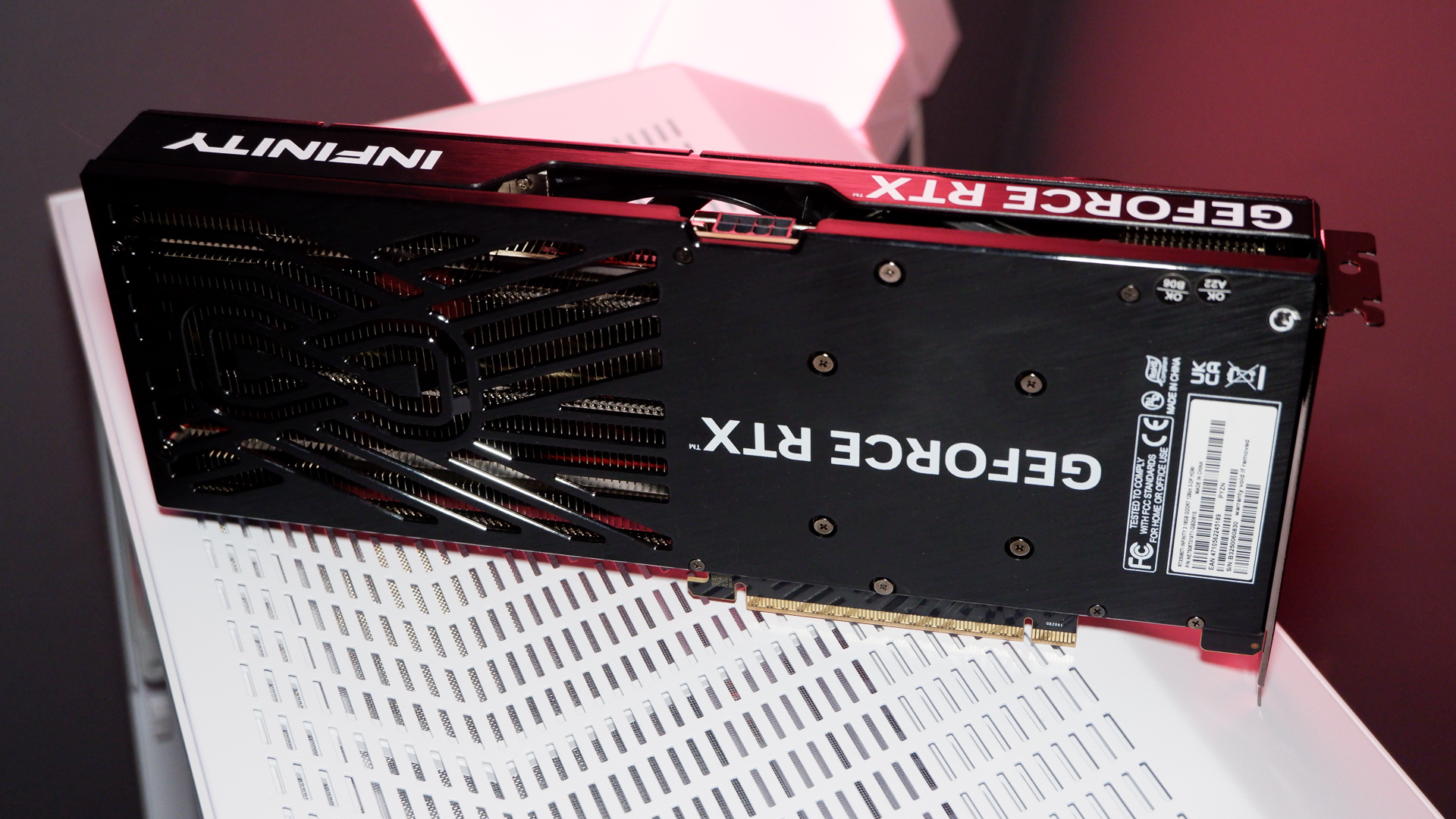
It is impressive how Nvidia can land a graphics card right where it wants it in the market. I joked with colleagues when the RTX 5060 Ti showed up that we could take the median frame per second between an RTX 4060 Ti and RTX 5070 and end up with the RTX 5060 Ti result. Lo and behold, that’s pretty much where it is in testing, if a little slower at times.
To see a roughly 5% increase on all the key specs—CUDA cores, RT cores, Tensor cores—turn into 20% is impressive, though it does make you wonder if the Blackwell architecture had a lot more gains to offer throughout the stack, had Nvidia needed to do more. The truth is, it probably didn’t need to, as it turns out a 20% uplift in performance or thereabouts is a decent deal considering the price reduction, and AMD’s currently MIA at this price point.
AMD plans to announce/launch the RX 9060 series by the end of June. That leaves only a few months to get things finalised and out the door. I won’t spend this review pondering the rumoured specs to see where AMD’s entry-level lands, as that’ll be out of date in a week’s time, but we can hope for something competitive after the RX 9060-series, which massively benefited from clever pricing on AMD’s behalf.
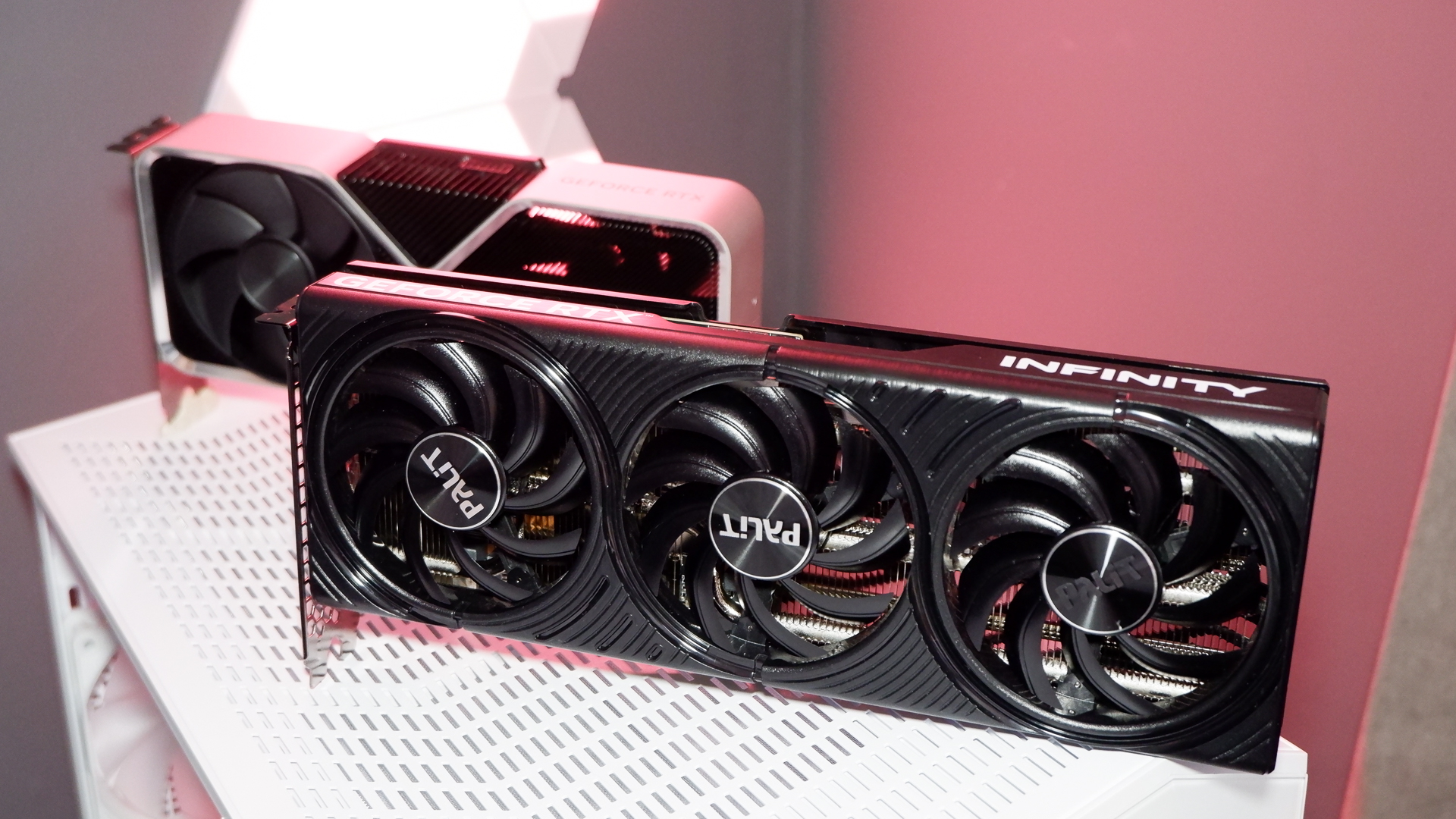
I would think that Nvidia’s close pricing of the 8 GB and 16 GB RTX 5060 Ti this time around—just $50 separates the two, compared to $100 with the last gen—is intended to act as a preemptive blocker on AMD. AMD isn’t able to parachute a card into No Man’s Land between Nvidia’s cards, as there’s simply no room. Instead, it’ll have to compete with Nvidia’s offerings head-on, or massively undercut both. Otherwise, there are no nasty surprises for AMD in terms of performance here, so it’s unlikely to be in panic mode.
That only works if Nvidia, or AMD’s, prices remain roughly analogous to their MSRPs, which also depends on whether that MSRP is in any way realistic or attainable. On that point, there’s obviously a lot to talk about.
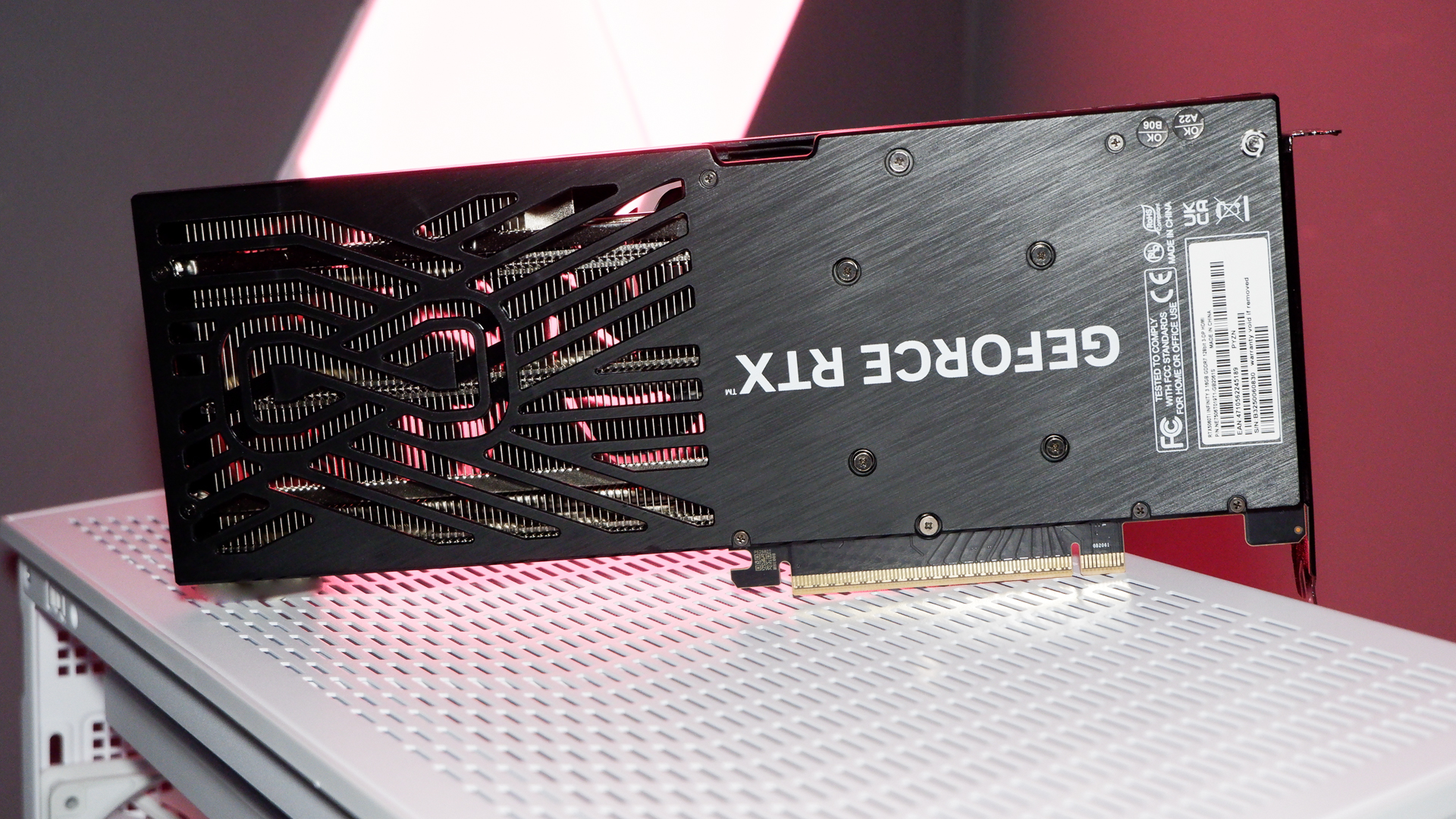
The RTX 5060 Ti’s price is a sticking point. It’s been a sticking point for Nvidia’s entire RTX 50-series, and most of all an issue for cards lacking a Founders Edition, such as the RTX 5070 Ti and, yes, this one. The huge premium placed on top of Nvidia’s MSRP has been in large part to blame for the rocky reception these cards have received, and I’ve looked around very quickly this morning, April 16, and seen mostly evidence that prices will be high for the RTX 5060 Ti.
Both the RTX 5060 Ti 8 GB and RTX 5060 Ti 16 GB are on Newegg already, listed at $420 and $480, respectively.
The question is whether these inflated prices stick around or not.
US readers are likely thinking “you’re having a laugh, mate”, but in American. Prices for the existing RTX 50-series graphics cards have shown little sign of coming back down to Earth. Similarly, you can argue that it’s Nvidia’s MSRP that’s the product of wishful thinking, as AIBs seem to be universally bumping prices up beyond it and getting the backlash as a result.
Nvidia told me in a pre-briefing that it “can work with our partners to get these out at reasonable prices, which we are doing,” and the whisperings we’ve heard from retailers are positive about the stock situation. But Nvidia has confirmed that these prices are “not going to be inclusive of tariffs,” and when pressed on that hot topic said: “There’s not much we can do about that.”
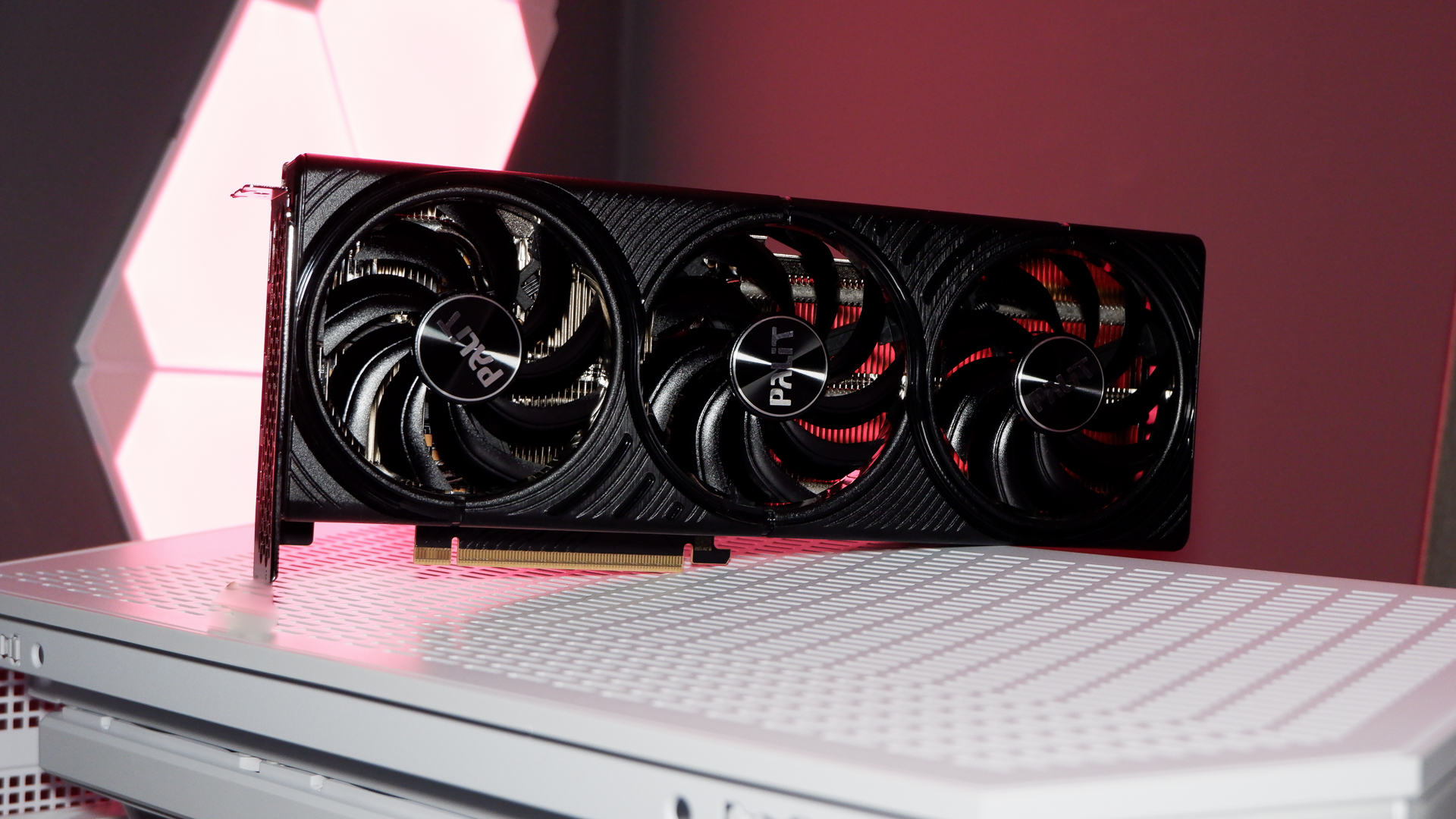
Right now, the Trump administration’s tariffs currently exclude computers and semiconductors coming into the USA, which wasn’t the case when I asked Nvidia about them. They might be back on, even increased, by the time you read this. This isn’t Nvidia’s problem to deal with alone, and all computer component manufacturers will be worrying about their bottom lines, but it does have the potential to make mincemeat of the value proposition of this card, as it does all others.
We’ll have to see how that one plays out, but it’s not all bad news.
In my native land of the UK, those sticky price points aren’t sticking around. As I type this, there is ample stock of near-MSRP, MSRP, or even sub-MSRP RTX 5070 and RTX 5070 Ti cards. Normality has returned, and there’s reason to believe the same will be true of the RTX 5060 Ti and forthcoming RTX 5060. These cards will only reach the top of the Steam Hardware Survey by being mostly affordable to most people.
So, I’m not all doom and gloom, though I do find the ramp-up of prices and lack of MSRP models by manufacturers to be a huge concern. The RTX 5060 Ti 16 GB absolutely loses its shine above $500, and you should walk away immediately at anything above $550. That’s RTX 5070 money. Or it should be.
Source link






Magic Untapped reports the latest Magic: The Gathering set, Tarkir: Dragonstorm, has been so popular stores are selling out of it and sometimes struggling to restock. “Demand for Tarkir: Dragonstorm has been exceptionally high and we are working to bring more to the market,” said Wizards Play Network community manager Nelson Brown.
It’s tempting to put this down to how traditional Dragonstorm is. It’s a return to a setting that debuted in 2014, with a theme—dragons, obv—which is as close to generic fantasy as you can get. But while some recent sets, like the racing-themed Aetherdrift and detective-themed Murders at Karlov Manor, have been criticized for leaning too hard into gimmicks, we did just have the extremely old-fashioned Foundations too. It’s not like this is the only chance players have had to put money down on conventionally themed cards this year.
Meanwhile Magic’s “Universes Beyond” crossovers are still doing well, and excitement is particularly high for the Final Fantasy set due on June 13. I wouldn’t be surprised if that one sells out at plenty of stores too, given how even people who were previously down on crossovers have changed their tune after seeing how rad the cards look.
While it may not be as palatable to Magic tragics, the other thing Tarkir: Dragonstorm has going for it is simply that it’s well-stocked with powerful new and returning cards—particularly ones that are useful in Commander, which is still the most-played official format. This is a set with a bunch of bombs and high-powered dragons you’ll want in your Commander decks, and a collection of preconstructed Commander decks that do the work for you.
I played Commander using those decks at a prerelease event last week, and it was notable how wild it got with multiple back-and-forth board wipes and near-wins in quick succession. The Sultai Arisen deck, which is built around discarding cards and then bringing them back living dead-style, almost dominated thanks to Lord of Extinction (first seen in Alara Reborn), which has a power and toughness equal to the number of cards in everyone’s discard pile added together.
It showed up as a 49/49 and only got more powerful from there—although it was flashy enough to attract everyone’s attention and got deleted almost immediately. Of course it came back even stronger after that thanks to the deck’s return-from-graveyard effects, and later I found out the deck also contains Consuming Aberration, which has the same terrifying stats.
The actual winner was the Mardu Surge deck, which builds an army like it’s rehydrating warriors from a pack. It started small, with the Chittering Witch card that summons a rat for every opponent. Three rats is nothing, though. That’s a level one clear-out-the-tavern-basement quest. Several turns later the rats had been joined by cards that brought their own hosts of goblins and angels and insects with them, as well as a Redoubled Stormsinger that creates a temporary copy of every creature that entered the turn it attacks. The real kicker was Within Range, an enchantment that makes your opponents lose life equal to the number of creatures attacking them. Even blocking the majority of the mass didn’t save us from that, and we were overwhelmed with pure numbers in short order.
Back when the Commander Legends: Battle for Baldur’s Gate set came out I tried to build my own dragon-themed deck with Firkraag from Baldur’s Gate 2 as the face. It sucked hard, and reminded me why I usually play with preconstructed Commander decks—if they don’t work out it’s not my fault. But Tarkir: Dragonstorm will make it way easier to build that draconic deck, with cards like Dracogenesis, Stormscale Scion, Mox Jasper, and Ugin, Eye of Storms as strong contenders for inclusion.
Other decks will benefit from the likes of Warden of the Grove, Elspeth, Storm Slayer, the return of Craterhoof Behemoth, and plenty of others. In the same way that cards from the original Tarkir sets continue to show up in eternal formats years later, these cards will be useful for a long time, and that’s as important to a set’s popularity as its theme—if not more so.
Source link

Jagex has launched its open world survival crafting game, RuneScape: Dragonwilds, into early access, even though it was only shown for the first time on March 31. Ahead of its release, a developer update livestream was scheduled to share some more details on the game, including its coveted release date, but little did we know that release date would be right now.
Prior to the release of its official teaser trailer which was shared only two weeks ago, Dragonwilds was technically first introduced in 2022 before being brought back to our attention in October 2024, when Jagex put out the feelers for some testers for a “new survival game set in the RuneScape universe.” Despite those brief mentions and the information on the Steam page, we haven’t been given a lot to go off when it comes to what to expect from the game.

What we did know for sure though, is that even though Dragonwilds isn’t the typical RuneScape experience we know and love, it’s still marketed as “RuneScape at its core.” That means you can expect plenty of quests to keep you on your toes, and a mass of lore to sink your teeth into. But there’s also a lot going on to help it become its own unique addition to the RuneScape universe.
Jagex’s executive producer, Jesse America, stated that “We’ve been working hard to develop an entirely new type of RuneScape experience that ignites fans’ passion, creativity and love for questing, and provide them with an all-new RuneScape adventure to discover. And this is just the start of our development journey.
“Throughout Early Access, we’ll be updating the game regularly with new content and features, while listening closely to the community to deliver an iconic open world survival crafting game that is loved equally by our biggest RuneScape fans and new players alike.”

While making your way around Ashenfall, you’ll be able to do all the key elements of survival crafting games like gathering resources, foraging, and working your way through plenty of skill trees. So don’t worry, you’ve now got an entirely new opportunity to get your runecrafting and woodcutting skills to 99. As you work your way through, you’ll unlock a plethora of new skills you’ll need while facing off with some of the new foes being added too.
In typical RuneScape fashion you’ll also be able to farm runes and use magic to take down enemies and hone your powers. More importantly, though, you’ll be able to use these magical abilities to make your new life as a survivalist easier. Dragonwilds gives you the all-important opportunity to cut down multiple trees at once, for example, and we couldn’t be more excited about that in particular. I imagine there are plenty of other useful ways to utilise your magical abilities, but come on. Cutting down multiple trees at once with the click of a button is huge for survival crafting games. I can’t be the only one who is thrilled about this.
Source link
Bem vindos a Shadows
Entra numa aventura no Japão com Naoe e Yasuke, não te vais arrepender 😁
Acompanha os próximos episódios de AC Shadows AQUI 👉 https://www.youtube.com/playlist?list=PLDowRCnCZ6UKvixy-Kq7_TxyetIR127ja
Espero que gostem, deixem o like, subscrevam, partilhem e ativem as notificações para não perder nenhum episódio!!!
Segue-me nas redes sociais 📲
LINKS TEMPORARIAMENTE APENAS NA PÁGINA PRINCIPAL DO CANAL!
source

